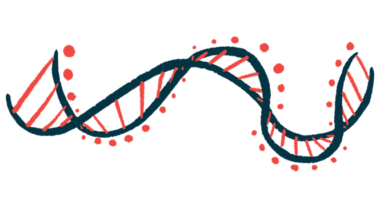FA mouse model with 800 GAA repeats better at capturing disease
YG8-800 mice, also showing immune cell activation, could speed therapy work

A recent mouse model of Friedreich’s ataxia (FA), called YG8-800, better mimics the disease’s symptoms and mechanisms in people than earlier models, making it a useful tool for testing treatments aiming to slow or stop disease progression, a study reports.
Specially, YG8-800 mice carry a mutation that causes repeats in their DNA nucleotides to a degree comparable to that found in FA patients, with the animals also lacking the coordination and muscle control that are among the disease’s defining symptoms. They also exhibit early and excessive activation of key immune cells in the brain.
The model was described by researchers in Spain in the study “Glial cell activation precedes neurodegeneration in the cerebellar cortex of the YG8–800 murine model of Friedreich ataxia,” published in the journal Neurobiology of Disease.
YG8-800 mice resemble Friedreich’s ataxia ‘as faithfully as possible’
FA is caused by mutations in the FXN gene where too many GAA repeats — a sequence of three DNA building blocks or nucleotides, guanine-adenine-adenine — lead to low levels of the frataxin protein. Without frataxin, cells produce less energy. As a result, cells with high energy demands, such as those in the brain, become prone to damage.
Understanding what drives a disease is key for developing treatments, and research has been looking into how glial cells may be involved. It’s thought that glial cells — including star-shaped astrocytes and microglia, the brain’s resident immune cells — become overactive in disease, contributing to inflammation and damage instead of protecting nerve cells to promote brain health, as they normally do.
To study the disease more closely, YG8-800 mice were developed to carry some 800 units of GAA repeats in a copy of the human FXN gene, and “resemble human pathology as faithfully as possible,” the researchers wrote. The animals are based on previous versions of the same mouse model, but with a greater number of GAA repeats that results in lower levels of frataxin.
Poor coordination, weight loss, and signs of brain atrophy seen in the mice
YG8-800 mice, in tests, showed symptoms similar to those of people with FA. Compared with control mice, which carried a healthy copy of human FXN, YG8-800 mice had poor coordination, weight loss, and signs of brain atrophy (wasting), with a loss of nerve cells and their connections, particularly in the cerebellum. This brain region controls motor function.
Brain atrophy started between 6 and 9 months of age in YG8-800 mice, the human equivalent of adults in their 30s. Starting at around 3 months of age, there was a gradual reduction in the levels of NeuN in YG8-800 compared with control mice. NeuN is a marker of excitatory nerve cells called cerebellar granule neurons, which are likely to fire signals to communicate with other cells.
“We observed a progressive reduction in the expression of NeuN, an exclusive marker of CGNs [cerebellar granule neurons] whose reduced levels are associated with neurodegeneration,” the researchers wrote. Cerebellar granule neurons are also the most numerous neurons in the brain.
Astrocytes and microglia, immune cells of brain, activated at early ages
Both astrocytes and microglia became activated early in the course of disease in YG8-800 mice, with levels of IBA1 — a marker of microglia activation — being higher than in control mice starting at 3 months old, a life phase equivalent in humans to adults in their 20s. GFAP — a marker of astrocyte activation — was elevated starting as early as 1 month of age.
Inflammation markers also increased in the cerebellum of YG8-800 mice compared with control mice starting at 3 months old, although the differences only became significant after 9 months of life. This suggests that glial cells may contribute to the onset of symptoms by promoting inflammatory damage in the brain.
Compared with previous mouse models, which the scientists said manifested the disease in ways “either too mild or too exaggerated,” they considered YG8-800 mouse model to better reflect the symptoms and mechanisms of FA in patients, with progressive brain atrophy occurring alongside a gradual loss of motor function.
“Moreover, our studies revealed early activation of astrocytes and microglia, which possibly contributed to the observed neuroinflammation and neurodegeneration,” the researchers wrote, who called YG8-800 “a convenient experimental tool for the development of new therapies that could limit the progression of this disease.”






